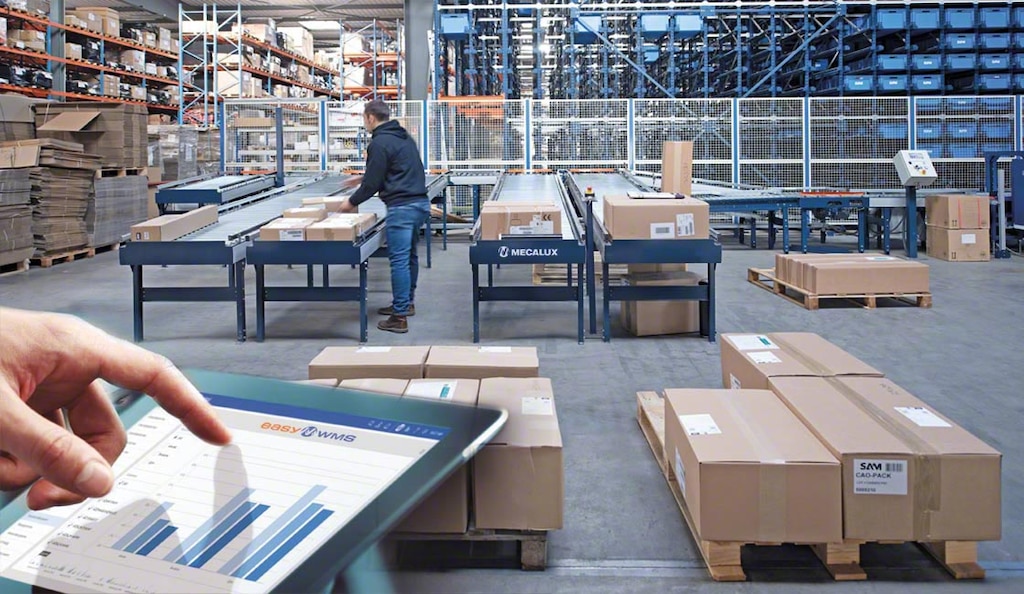
What is a TMS system?
A TMS is a logistics software solution that helps companies make the most of their freight transportation operations. In today’s logistics landscape, where customers expect ultrafast deliveries, this technology streamlines supply chain management.
What is TMS in logistics?
A TMS (transportation management system) is a software solution that tracks all logistics processes related to the movement of goods, whether by air, sea, or land.
This technology leverages algorithms to optimize routes and guarantee effective order delivery to customers, pickup points, distribution centers, and other locations. To make this happen, the TMS manages all information related to goods shipments and makes it readily available to suppliers, carriers, and customers alike.
Likewise, these systems automate tasks such as generating the necessary paperwork for smooth transactions and handling freight billing. They monitor shipments in real time and support decision-making through data analysis, helping to trim operational costs.
Core capabilities of a TMS
A TMS is an essential tool for transportation management. It coordinates, supervises, and optimizes every stage of the distribution process. Moreover, it interfaces with ERP and WMS platforms for integrated supply chain management.
A TMS performs five major functions:
- Planning. A TMS schedules order distribution by consolidating shipments and selecting the most effective way to move them. It analyzes rates, distances, carrier availability, and vehicle occupancy to minimize delays due to poor resource allocation.
- Monitoring and visibility. This software provides real-time shipment-status visibility, from the time the goods leave the warehouse to end-customer delivery. In addition to sending customers order status updates, it can implement corrective actions in the face of disruptions, making sure journeys are completed as planned.
- Time slot management. By coordinating loading and unloading windows, a TMS shortens wait times at docks, prevents bottlenecks, and keeps operations running smoothly.
- Report generation. TMS software provides advanced analyses of carrier routes and operational performance. Through dashboards and advanced analytics, companies can identify opportunities to cut unnecessary costs.
- Billing and payments. Automating payment processing eases admin burdens and boosts operational efficiency, resulting in greater accuracy and speedier transactions.

What can a TMS offer your business?
A TMS platform provides the following advantages for logistics operations:
- Cost savings. This software helps cut down on admin expenses by managing transportation rates. It streamlines shipments by identifying the most cost-effective options, configuring routes and loads to save on fuel, tolls, and downtime.
- Improved efficiency. TMSs support more accurate route planning and shipping as well as timelier deliveries. By automating tasks and centralizing information, they reduce human errors and enable the smart allocation of resources (vehicles, drivers, and warehouses) to prevent delays.
- Greater visibility. A TMS acts like a control tower, closely monitoring goods flows for quick troubleshooting.
- Regulatory compliance. TMS software automates paperwork management to ensure that orders meet legal and international customs requirements. The system identifies the regulations applicable to every shipment and generates the relevant documentation.
- Customer satisfaction. A TMS improves the user experience by informing consumers about the status of their orders through delivery tracking. It also simplifies billing and payment for faster transactions.
What companies use a TMS?
Businesses in multiple industries leverage TMS software to boost their freight delivery operations. These are some of the most common:
- Logistics and transportation providers. Distributors and third-party logistics (3PL) companies implement TMS systems to optimize routes, manage fleets, and provide their clients with real-time visibility.
- Manufacturers. These organizations use TMS software to distribute their products globally, ensuring performance and meeting delivery deadlines.
- Wholesalers and retailers. Wholesalers oversee large distribution networks, while retailers — especially those with multiple stores or an online presence — employ TMS platforms to deliver to points of sale or directly to customers.
- Ecommerce businesses. Online retailers benefit from TMS software by speeding up order fulfillment, offering quick, efficient delivery times.

Integrating a TMS with a WMS
A TMS typically interfaces with a company’s ERP software to receive and manage all order-related data, streamlining transportation planning and execution.
But the TMS can also be connected to a warehouse management system (WMS), giving organizations a more complete and accurate view of the supply chain. Linking both logistics information systems improves inventory and distribution management, increases shipment accuracy, and enables smooth communication between all stakeholders.
Once orders are ready, the WMS sends shipping details to the TMS, saving time and reducing errors. The ultimate goal is to deliver products on time, in perfect condition, and as efficiently as possible.
The importance of overseeing transportation operations
In a market where speed and reliability are critical, TMS solutions are assets for optimizing transportation management. Integrating a TMS with other logistics solutions like a WMS enhances traceability, lowers costs, and supports customer satisfaction. Our company developed Easy WMS to streamline logistics processes. Looking to connect your warehouse and transportation operations? Get in touch — we’ll help you build a fully integrated supply chain.
